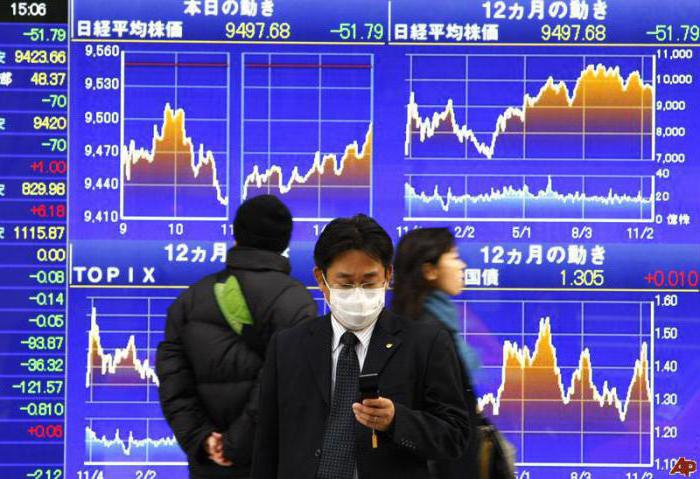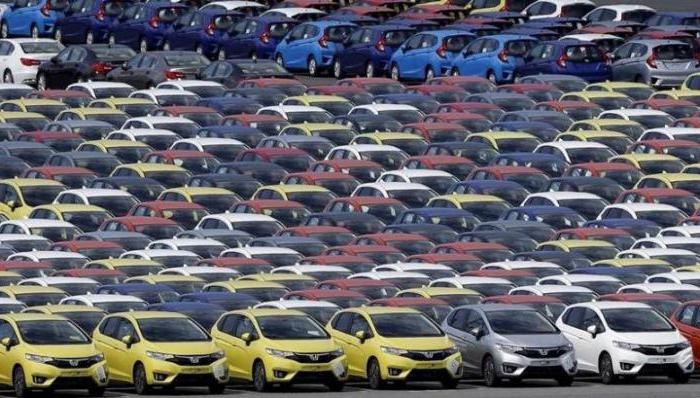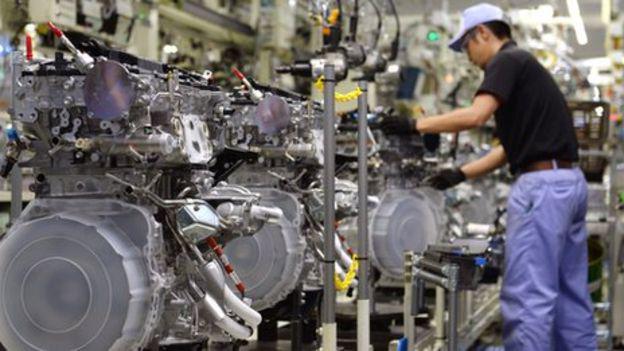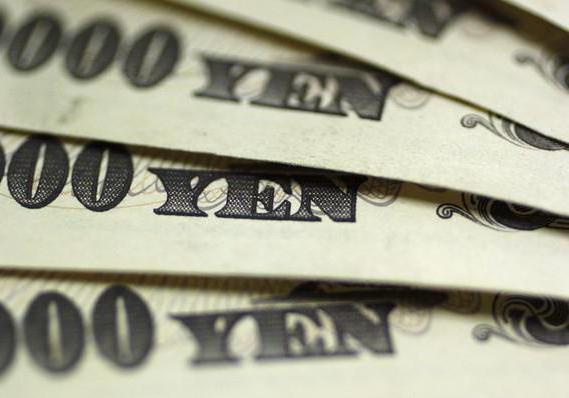Japan is in fifth place in the global economy. Outstripped by such recognized leaders as Singapore, the United States and China. But in terms of welfare, it significantly surpasses Asian countries and approaches European powers. Literally in the last fifty years, the Land of the Rising Sun has managed to create one of the most flexible and sustainable economies in the world, and international trade plays a significant role in it. What caused the economic success of the state? What is the export and import of Japan? This is the subject of our article.
Japanese economy: post-war years
In the second half of the twentieth century, Japan came under total control of the United States, which imposed on it the path of economic development, but in return provided its technology. We can say that this served as an impetus to Japanese power in international trade. In just twenty years, the Land of the Rising Sun has managed to create its own technological base and has become a major exporter of goods.
At the end of the twentieth century, the state already ranked third in terms of exports. Japan was second only to the United States and Germany. Every year, the country ramps up the pace of exports, analysts say that over the past fifty years it has increased seventy times. And despite the fact that in the new century there has been a slight decline in economic growth, the state skillfully adapts to the changing conditions.
Characteristics of Japan's exports and imports in the second half of the last century
It is worth noting that the Land of the Rising Sun is actively importing and exporting goods. This process was formed back in the fifties of the last century and transformed into a stable, but flexible system.
Japan's imports were primarily fuel oriented. The fact is that the country has rather scarce mineral deposits and is forced to constantly import them from abroad. This weakens its position on the world stage and makes it dependent on pressure from other major powers. The structure of Japan's imports until the sixties of the last century consisted mainly of coal, which was used by industrial enterprises. The energy revolution that happened led to the fact that the structure of imports has changed significantly. The list included oil and liquefied natural gas, to which many enterprises were transferred.
Japan's imports also included technology and knowledge. Thanks to this policy, the country quickly managed to start production of high-quality cars, high-precision devices and took the first steps in robotics. This became the basis for further economic growth, in which Japan's exports and imports significantly changed.
Brief characteristics of the Japanese economy
International trade plays a very important role in the economic development of the Land of the Rising Sun. It is based on the high competitiveness of Japanese products - they are of extremely high quality, which increases the demand for their production. Analysts attribute this to a good research base, as well as cheap labor. Until now, in Japan, the time period spent on the development and release of a new product is the shortest in the world. In addition, cheap production with high quality makes it possible to make any goods competitive in terms of cost, which is very important in the current economic crisis.
Japan's import of raw materials still occupies a significant place in the country's economy.Now it mainly consists of oil, natural gas, simple microcircuits and textiles. Despite the fact that the country is actively switching to nuclear energy and about ten percent of the energy consumed is generated by nuclear power plants, Japan cannot completely refuse to import raw materials. This problem cannot be resolved in the near future.
The Land of the Rising Sun exports mainly products of the engineering and chemical industries, automobiles, steel, and complex microcircuits used in high-precision instruments. According to recent data, the volume of exports and imports of Japan is about one and a half trillion US dollars. In addition, in recent years, the Japanese economy has seen a tendency to export capital, which has turned the country into a significant and important player on the world stage.
Import of raw materials: features and nuances
We have already mentioned that the import of fuel into Japan allows the country to maintain a certain level of industrial growth. Currently, the Land of the Rising Sun mainly imports:
- oil;
- natural gas;
- coal.
As a raw material base for mechanical engineering, Japan is actively importing metals and simple microcircuits that are used in production. It is extremely unprofitable for the country's economy to engage in the simplest technologies, which is why this category of goods began to be imported.
Importing Coal
Coal is actively used in thermal power plants; they make up almost twenty-two percent in the country's energy sector. It is worth noting that coal is not mined in the country, more than fifteen years ago the last coal mines were mothballed in Japan. Now this type of fuel is fully imported from Indonesia, China and Australia, which is the main partner of the Land of the Rising Sun. China supplies Japan with no more than thirteen percent of total coal.
Oil and oil products in the country's economy
The Japanese economy is extremely dependent on imports of petroleum products. Analysts say the country imports up to ninety-nine percent of the oil, with almost fifty percent of the state’s energy balance. Oil crises have a very noticeable effect on the Japanese economy, so the country is trying to switch to alternative fuels. Although so far the situation has not undergone major changes. The largest importers of oil are the countries of the Middle East, they are long-standing partners of Japan in this market segment.
Liquefied natural gas: import from abroad
The country of the rising sun is the largest consumer of liquefied natural gas, which is thirteen percent of the total energy balance of Japan. Since natural gas is an environmentally friendly type of fuel, its share in the energy system is growing. Now some types of automobile engines and thermal power plants are working on it. In addition, this type of fuel allows the country to slightly relax the grip of the Middle East, which dictates oil prices and puts the Japanese economy at risk.
Indonesia was the largest supplier of liquefied natural gas, but in recent years it has been replaced by Malaysia and Australia. Also, Brunei and Qatar act as partners, their total share of deliveries does not exceed twenty percent of the total.
Import of metals to Japan
Despite the fact that the basis of Japan's imports is fuel, metals also play a significant role in this structure. The fact is that the country is extremely poor in metal deposits, so it has to import them into its territory. Up to one hundred percent of imports are iron, nickel and copper ore, as well as aluminum alloys. Slightly lower percentages are lead and zinc ore. The country seeks to reduce this type of import and systematically implements the adopted program of orientation change in international trade.
The following countries are major partners in Japan's supply of metals:
- Australia;
- Indonesia:
- Brazil;
- India.
An interesting fact is that in the country there are deposits of the purest gold in the world. Gold-bearing veins are not numerous, but are actively developed by the Japanese.
21st Century Import: Changes in Structure
Just a few decades ago, Japan significantly changed the structure of imports. Economists attribute this to the fact that the country actively located its plants in the Asian region. With the growing prosperity of the inhabitants of the Land of the Rising Sun, it became increasingly difficult to find cheap labor, so some enterprises gradually migrated beyond the borders of Japan. These factories mainly produce textiles and electrical appliances. They meet high quality requirements and have a fairly low cost. Therefore, Japan's imports of the twenty-first century have changed their "face."
The country also began to import equipment and machinery from Europe and the USA. This is associated with the reprofiling of some large Japanese enterprises. It is known that this type of import has especially increased after the Fukushima accident amid a significant decline in exports. After 2011, Japan has been striving for large-scale economic transformations, which are associated with the redistribution of the share of exports and imports.
Capital: features of exporting and importing
Already in the eighties of the last century, Japan began to gradually form a system of capital export. Since this period, the amount of investments in foreign companies and industrial facilities has increased six times. According to the latest data, the Japanese annually invest more than twenty billion US dollars in production outside their home country. Here they are second only to the United States.
Export of capital has certain priority areas. These countries include:
- North America;
- Western Europe;
- Asia.
It hosts most of the country's capital. In North America, Japan aims to bridge the gap in computer technology and computing. Although initially the country invested in labor-intensive industries, forming new companies for the extraction and processing of natural resources.

It is worth noting that in recent years, Japan's priorities have been systematically shifting towards East and Southeast Asia, where the United States previously led. Now a successful production base is being formed here, which already accounts for more than forty percent of Japan's exports. By 2020, the plans of the Land of the Rising Sun include obtaining the status of the largest exporter of capital.
What does Japan import other than raw materials and goods? You will be surprised - capital. Although the country is not an attraction of foreign exchange investments, it actively uses imports in the form of loans and credits. Now the government plans to bring the share of foreign investment in the country's economy to five percent of GDP, now this figure is smoothly approaching four percent. It is worth noting that the import of Japan (capital) indicates how much the priorities of the world economy are shifted towards the countries of Asia.
Economic difficulties Countries of the rising sun
Analysts now view Japan’s economy as deadlocked. On the one hand, it is extremely stable, and on the other, GDP growth is not planned. Moreover, in recent years, imports have significantly exceeded exports due to falling demand for Japanese-made goods.
Analysts predict a gradual withering of the Japanese economy, if the world does not happen another technological breakthrough. A special role in the withering of the economy is played by an aging population and an increase in its financial well-being, which makes it impossible to reduce the cost of goods at the expense of labor. Many economists have argued that there are no economic spikes expected in Japan, nor sharp drops.
Conclusion
Japan is a rather controversial country. After all, for many years she has been holding a stable position on the world stage. This allows her to develop and build new production models. But on the other hand, it has already reached the peak of its development and is now in a stage of stagnation.





